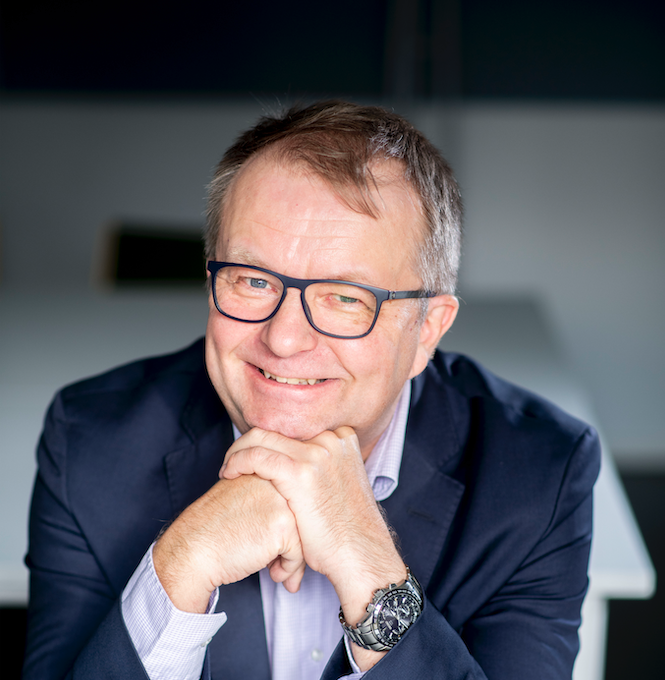Bio-based opacifiers offer solutions to cleaner environment

The CELLIGHT project aims to replace the titanium dioxide (TiO2) with innovative, sustainable bio-based alternatives, marking a significant leap towards greener and sustainable solutions in the industry.
TiO2, a widely used whitening agent with a global production of around 8 million tons annually, poses environmental concerns. It is responsible for emitting between 60 to 96 million tons of CO2 each year. Besides the open pit mining of TiO2 poses a threat to the delicate environment. In response, the CELLIGHT project seeks to create bio-based opacifiers that match TiO2’s light-scattering capabilities while offering a greener and sustainable option for consumers.
Huge Market Potential
The market for sustainable opacifiers is expanding, with global demand expected to rise due to regulatory pressures and consumer demand for sustainable products. The CELLIGHT project is well-positioned to capitalize on this growth, offering bio-based alternatives that can replace TiO2 in key industries, including paints, cosmetics, and personal care. The potential to reduce global CO2 emissions by approx. 31–50 million tons annually could generate substantial economic benefits for Finland.
Juha Lipponen, Professor of Practice, Aalto University: 'The possible replacement of the commonly used harmful and highly CO2-intensive titanium dioxide pigment (TiO2) with cellulose offers great opportunities for the planet, the forest industry and the Finnish economy. In plain numbers, if the 4.6 million tons of market pulp exported from Finland in 2024 year were processed into a product sold at the world market price of titanium dioxide, this alone would almost double the value of Finnish forest industry exports, while removing from the atmosphere about the same amount of carbon dioxide released in TiO2 processing as Finland's entire national carbon footprint.'
The project focuses on leveraging cellulose, a plant-derived material, to create sustainable alternatives. Research will define the optimal structural principles for enhancing light scattering in bio-based materials, utilizing biological, and chemical approaches.
'We’re taking on this ambitious challenge by replacing titanium dioxide with innovative bio-based opacifiers. Our approach not only significantly reduces carbon emissions but also offers industries a more sustainable alternative. By shifting to these eco-friendly materials, we’re paving the way for greener industrial practices and contributing to a cleaner environment,' says Muhammad Mujtaba, Project Manager of CELLIGHT.
Collaborative Research for a Sustainable Future
CELLIGHT brings together a consortium of leading Finnish and International companies and research institutions. The project benefits from a robust industrial consortium, with companies including Metsä Spring Oy, Nouryon, PPG Tikkurila, Nordic Bioproducts Group Oy, and Wetend Technologies Oy. These partnerships will ensure that the project’s innovations are directly applicable to industries in paints, coatings, cosmetics, and more. The collaborative effort strengthens Finland’s leadership in sustainable technologies and advances the nation’s bioeconomy.
The project aims to achieve key milestones, such as:
- Developing bio-based materials that replicate the opacifying effects of TiO2.
- Conducting comprehensive testing and validation to ensure the materials meet industry standards for both aqueous and non-aqueous applications.
As a part of the Metsä Group's ExpandFibre veturi ecosystem, CELLIGHT is aligned with broader Finnish initiatives for advancing bioproducts and materials. The project aims to deliver not only environmental benefits but also economic opportunities. By 2035, the consortium expects to fully replace TiO2 in consumer products, cutting emissions and driving sustainable growth in Finland’s bio-based industry.
"There is nearly endless potential for new application areas for high-end cellulose derivatives such as microcrystalline cellulose. NBG is eager to collaborate with different industries and institutions whenever there is an initiative to find more sustainable solutions by utilizing novel biomaterials in existing and new processes and products," says Nuutti Lehtikuja from Nordic Bioproducts Group Oy.
More about the project
Coordinated by VTT and supported by research partners with extensive expertise in the field of Functional Materials development from Aalto University and the University of Helsinki, this two-year project tackles critical global issues related to TiO2.
CELLIGHT is a 2-year project running from September 1, 2024, to August 31, 2026, with a funding of €1.3 million provided by Business Finland. This collaborative project has been established through the Co-Research funding mechanism, bringing together three research partners: Aalto University, VTT Technical Research Centre of Finland, and University of Helsinki. CELLIGHT benefits from strong backing from a diverse group of commercial partners, including Metsä Spring, Nouryon, PPG Tikkurila, Nordic Bioproducts Group Oy, and Wetend Technologies Oy.
Additionally, CELLIGHT is linked with the Metsä Group’s Veturi ExpandFiber ecosystem, further strengthening its innovative approach and impact. CELLIGHT will drive innovation and deliver practical solutions to the market, establishing Finland as a leader in sustainable material science and contributing to global efforts in climate change mitigation.

- Published:
- Updated:
Read more news

Aalto in 2024: Love pictured in the brain, wooden crystals that make fashion shine, recovering minerals from wastewater and more
This year has been another feast of science and art at Aalto University
The City of Espoo and Aalto University signed a strategic agreement for a new five-year partnership period
The collaboration includes investments in the Otaniemi area, business and innovation activities, and efforts to integrate international talent.